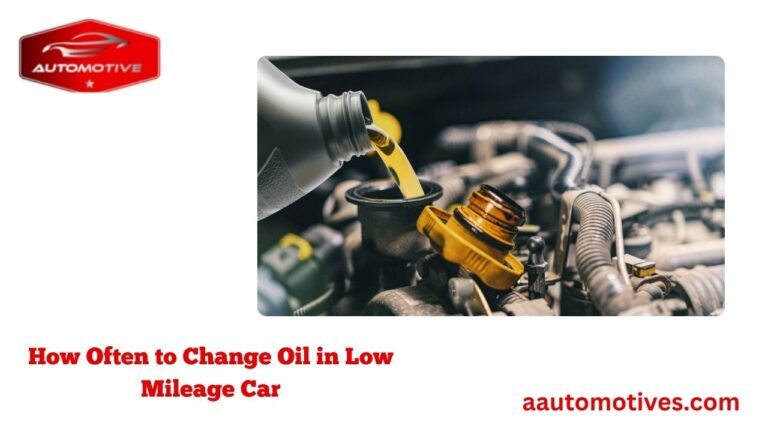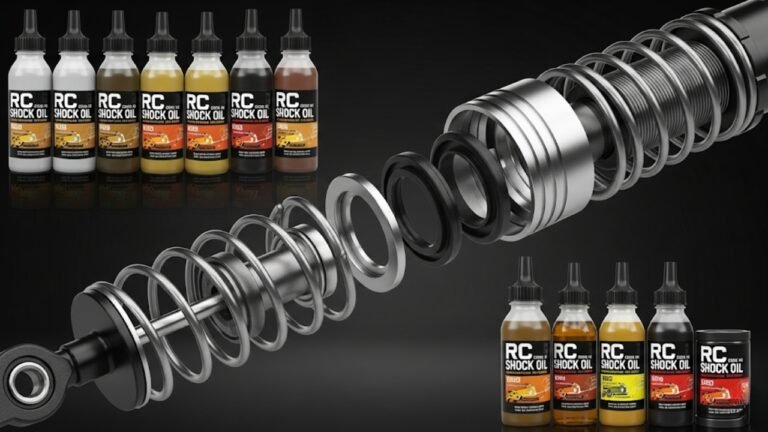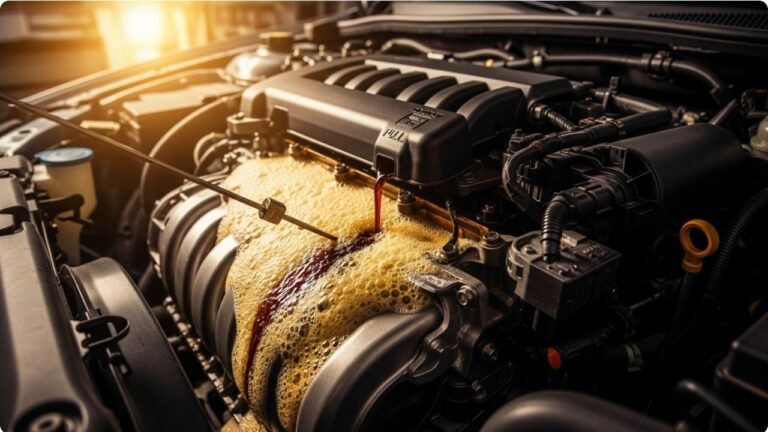Do You Put Oil in the Car When It’s Hot or Cold?

When you’re standing in your driveway, hood popped, and oil dipstick in hand, it’s easy to feel a little confused. Should the engine be hot, warm, or completely cold before you pour in new oil? It’s a question that’s more important than it might seem. The answer can impact your car’s performance, engine life, and even your wallet.
Let’s be real—engine oil isn’t the most thrilling topic. But if you’ve ever had your car run rough, overheat, or just not feel right, you know oil plays a huge role. You might not think about it much, but the moment that low oil light pops up, it suddenly becomes urgent.
In this guide, we’ll talk about when exactly you should put oil in the car—when it’s hot or cold, and why timing matters more than you’d expect. I’ll also share some personal experiences, useful tips, and a few hard-learned lessons.
Why Engine Oil Matters More Than You Think

Think of oil like your body’s blood. It keeps things flowing, reduces friction, and controls temperature. When it’s low or dirty, your engine works harder. Eventually, it starts breaking down.
Here’s what good oil does:
-
Lubricates moving parts to prevent wear.
-
Cleans out dirt and sludge inside the engine.
-
Cools down hot areas under the hood.
-
Seals gaps between piston rings and cylinder walls.
-
Protects metal surfaces from corrosion.
So, when we ask “do you put oil in the car when it’s hot or cold,” we’re actually asking, “When will the oil work best—and help our engine the most?”
Hot or Cold? What Mechanics Recommend
Let’s cut to the chase: you should add oil when the engine is warm—but not hot. Let me explain.
When the engine is cold, all the oil has settled at the bottom. The dipstick reading will be high, but that doesn’t reflect oil circulation.
When the engine is hot—just after driving—it’s risky. Oil gets super thin and hot. Opening the oil cap could result in burns, and your reading might be off because oil is still splashing around inside.
The sweet spot? Wait 10–15 minutes after shutting off the engine. This gives the oil time to settle, cool slightly, and give an accurate reading. You can then add more if needed.
Here’s what to do:
-
Drive your car for a few minutes (5–10 mins is enough).
-
Park on a level surface.
-
Turn off the engine.
-
Wait 10–15 minutes.
-
Pull out the dipstick and wipe it clean.
-
Reinsert, pull out again, and read the level.
-
If it’s low, add oil slowly and re-check.
What Happens if You Add Oil at the Wrong Time
I’ll never forget the time I poured oil right after a highway drive. The engine was hot, I was rushing, and the oil frothed up instantly. I got splashed—thankfully not badly—and the smell of burning oil filled the air. Rookie mistake.
Here’s what can go wrong:
| Condition | Risk Level | What Can Happen |
|---|---|---|
| Too Hot | High | Oil splash, burns, wrong reading |
| Too Cold | Medium | Inaccurate reading, overfilling |
| Warm (ideal) | Low | Safe, accurate, smooth oil top-up |
Adding oil when the engine is cold might seem safer, but it’s misleading. The oil has settled at the bottom, and the dipstick might show low. You may overfill it, leading to pressure buildup and seal damage.
Adding oil when the engine is hot is dangerous for you and not ideal for the engine. Oil thins out, making levels inaccurate. Plus, you risk spilling oil on hot engine parts, causing smoke or even fire.
Why Oil Temperature Affects Its Behavior
To understand this better, let’s get into how oil behaves at different temperatures. Engine oil, like any fluid, changes with heat. When cold, it thickens and flows slowly. When hot, it thins out and flows quickly.
This matters for two big reasons:
-
Viscosity: This is oil’s thickness. Thicker oil (when cold) takes longer to circulate.
-
Pressure: Hot oil spreads faster but may not coat parts as well if it’s too thin.
Modern oils are multi-grade, like 5W-30. That “5W” means the oil behaves like a 5-weight when cold, and “30” means it behaves like a 30-weight when hot. This helps protect the engine in all conditions—but timing still matters.
Think of it like this: pouring honey into a jar is easier when it’s warm. Same with oil. But if you pour it while it’s boiling hot, it’s dangerous and messy.
Personal Tip: Make It a Routine
I’ve found that checking oil on Sunday evenings works best. It’s a quiet time. The car’s usually been driven earlier in the day, and I’ve got time to let the engine cool a bit. I pop the hood, grab a rag, and do a quick check.
If it needs topping off, I do it right then. It takes just 5 minutes. Over the years, it’s saved me thousands in repairs.
Here’s my simple routine:
-
Drive around for errands.
-
Park and wait 15 minutes.
-
Check oil on level ground.
-
Add if needed—but slowly.
-
Don’t overfill—stop at the upper line.
Doing this every few weeks gives peace of mind. Especially before long trips, I make it a point to check it the day before. It’s like brushing your teeth—small habit, big benefit.
How Oil Affects Engine Life
Let’s take a step back. Why all this fuss about when to put oil in your car?
Because oil is what keeps your engine alive. Running with too little oil is like trying to jog in 40°C heat without water. Eventually, parts seize, overheat, and break. Engines can literally weld themselves together from the inside.
Adding oil at the right temperature means:
-
Correct levels every time.
-
Even distribution inside the engine.
-
No overfilling, which can damage seals and gaskets.
-
Lower stress on engine components.
I’ve seen friends skip oil checks for months. One of them had to replace an engine because it ran dry. Total cost? Over $2,000. All because they didn’t take 5 minutes to check oil properly.
Different Car Types, Different Needs
Not all engines are the same. Older cars behave differently than newer ones. My old 1999 Toyota Corolla had a leaky valve cover, and I had to top off oil every two weeks. But my newer SUV barely uses any between changes.
Some quick pointers:
-
Old cars: Check more often. Seals wear out.
-
Turbo engines: Need better oil. Check before long drives.
-
Hybrids: Still use oil! Don’t forget to check.
-
Luxury cars: Some have electronic dipsticks. Follow the manual.
Regardless of the type, the rule is the same—wait 10–15 minutes after shutting off the engine, then check and add if needed.
Signs That Your Car Needs an Oil Top-Up
Sometimes your car tries to speak to you—through subtle signs. If you listen carefully, it tells you when it’s thirsty for oil. Most of us ignore these signs until a warning light comes on. But waiting that long? It’s like ignoring a fever until it becomes a hospital visit.
Here are a few clues:
-
Burning smell: Especially when stopping at a red light.
-
Knocking or tapping sounds: Oil cushions parts. Without it, things get noisy.
-
Oil warning light: Obvious but dangerous to ignore.
-
Excessive exhaust smoke: Could mean oil is burning.
-
Engine running hotter than usual: Less oil = more friction = higher temp.
I once ignored a faint ticking sound thinking it was “normal.” Days later, the sound got louder and the engine started misfiring. When I checked, the dipstick was bone dry. A $10 bottle of oil could’ve saved me from a $300 repair.
So when in doubt, always check. It’s free and fast.
Choosing the Right Oil Matters, Too
While “do you put oil in the car when it’s hot or cold” is crucial, what kind of oil you use matters just as much.
Different engines need different oil types. Choosing the wrong one can throw off everything—fuel efficiency, performance, even emissions.
Here’s a quick breakdown of oil types:
| Oil Type | Best For | Notes |
|---|---|---|
| Conventional | Older engines | Cheaper, needs more frequent changes |
| Synthetic | Modern engines, extreme temps | Longer-lasting, better protection |
| Blend | Mix of both | Good middle ground |
| High Mileage | Cars over 75,000 miles | Helps reduce leaks, protects older parts |
And don’t forget viscosity. It’s usually listed in your owner’s manual. Like 5W-30 or 10W-40. The first number shows how it performs in cold, and the second, in heat.
If you’re unsure, check under the hood. Most cars have a sticker or label near the oil cap showing the right oil type. You can also ask your mechanic or look it up online.
The Role of Seasons and Climate
Where you live matters more than you’d think. Climate changes how oil behaves—and when to check it.
I live in a place where summers get brutally hot, but winters drop near freezing. During winter, I always let the car warm up for 5 minutes before checking oil. It helps thin the oil just enough to move around. In the summer, though, I wait longer after driving to let it cool down a bit more before opening the hood.
Here’s how weather affects things:
-
Cold climates: Oil thickens. Takes longer to flow.
-
Hot climates: Oil thins out. Easier to splash or burn.
-
Humid places: Moisture buildup can dilute oil over time.
-
Dry areas: More dust, so oil gets dirty quicker.
No matter the climate, the rule remains: check oil when the engine is warm, not hot or cold.
Overfilling vs. Underfilling: Both Are Bad
Too much oil can be just as harmful as too little. That’s a mistake many people make—thinking “more is better.” I used to be guilty of that too. I thought topping it off to the very top would give me “extra protection.” Instead, it led to a frothy mess and a smoky exhaust.
Here’s what can happen:
-
Overfilling causes the oil to foam.
-
Foam doesn’t lubricate—it traps air.
-
That leads to low oil pressure, even though it looks “full.”
-
It can damage gaskets, seals, and the catalytic converter.
On the flip side:
-
Underfilling leaves parts exposed.
-
Friction increases.
-
Heat builds up.
-
Engine parts wear out faster.
So stay in the “Goldilocks zone”—not too much, not too little. That’s why checking oil after waiting 10–15 minutes is key. You get the most accurate dipstick reading, and your engine gets the right care.
What If You Just Changed the Oil?
A common question is: “Do you still need to check the oil after an oil change?” Short answer—yes.
Even if a mechanic did it, mistakes happen. I once had an oil change done at a quick-lube place, drove home, and decided to check anyway. Good thing I did—they’d underfilled it by nearly a quart!
Always double-check:
-
Let the car run for 5 minutes after the oil change.
-
Turn it off and wait 10–15 minutes.
-
Check the dipstick and add if needed.
Also, after any oil change, look under the car after parking overnight. If you see drips, there could be a leak. Catching it early can save your engine.
Cultural Tip: What My Dad Taught Me
Growing up in a small town, car maintenance was a family thing. My dad always said, “Treat your car like your health. Ignore small signs, and you’ll pay big later.”
Every Sunday morning, while mom made tea, he’d be outside with a rag in his pocket. Checking the oil wasn’t just about cars—it was a life lesson. Stay consistent. Do the little things right. Don’t wait for problems to get big.
I try to keep that spirit alive. Now, when I teach my own kids, I use the same line: “Let it rest a bit before you check the oil—just like you rest after a long day.” It sticks. And it works.
When to Put Oil in the Car
Here’s a quick recap of everything we’ve covered:
| Step | Best Practice |
|---|---|
| When to check oil | 10–15 mins after driving |
| Engine temperature | Warm (not hot, not cold) |
| Parking surface | Level ground |
| Oil type | As per owner’s manual |
| Add oil slowly? | Yes |
| Overfilling danger | Yes – can cause engine damage |
| Cold-weather checking | Let the car warm up first |
| After oil change | Always double-check |
Cars may be machines, but they have personalities. They give hints, show moods, and reward those who treat them well. Checking and adding oil isn’t just maintenance—it’s a relationship.
So next time you wonder, “Do you put oil in the car when it’s hot or cold?” remember: warm is the sweet spot. Like sipping tea that’s not boiling, not cold. Just right.
Be patient. Be consistent. Your car will thank you with years of smooth drives, fewer breakdowns, and better fuel economy.
Trust me—those five quiet minutes with your hood up could be the best investment you ever make.






